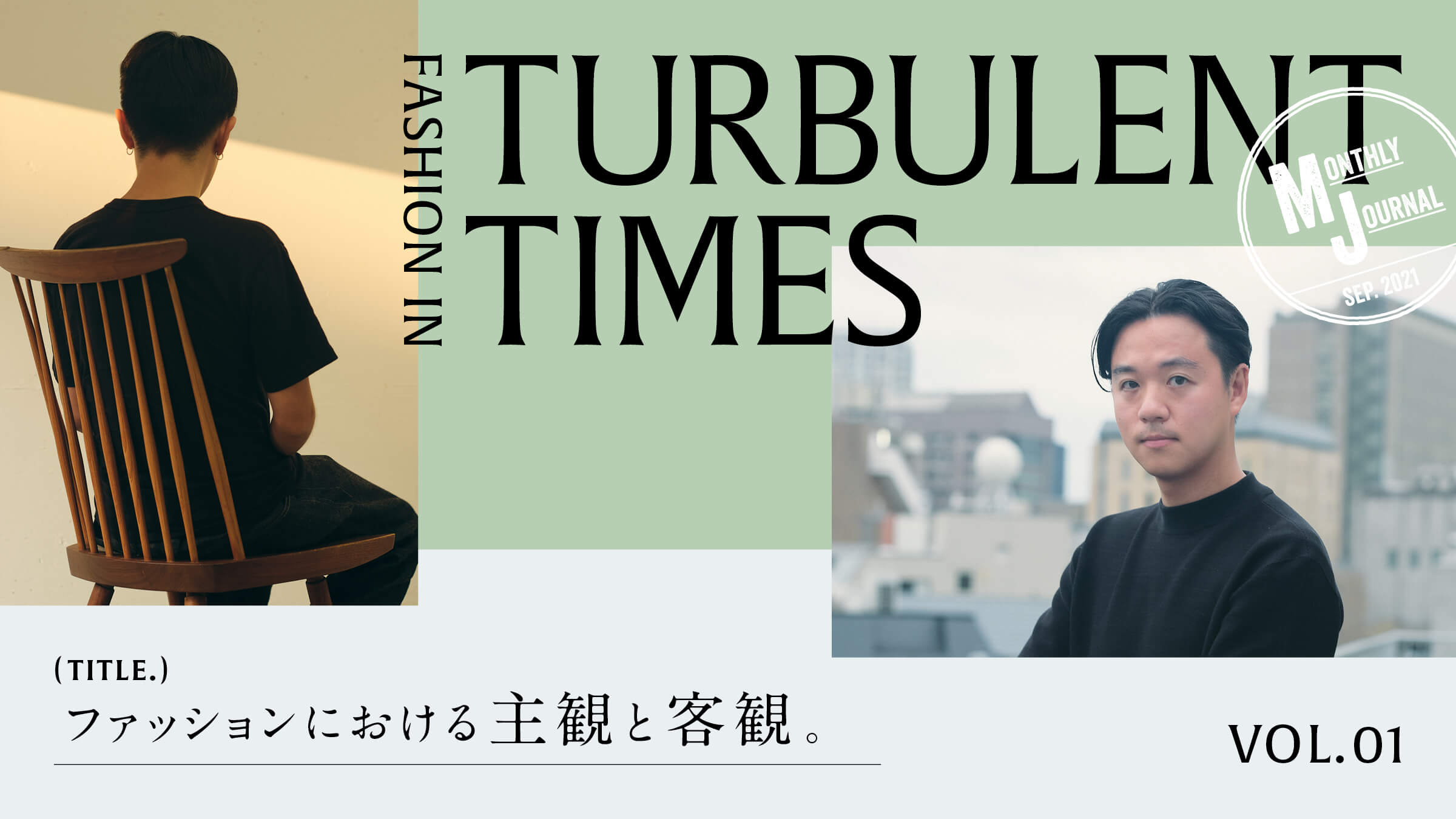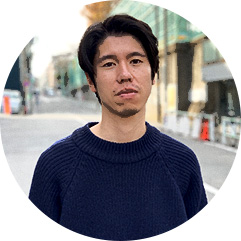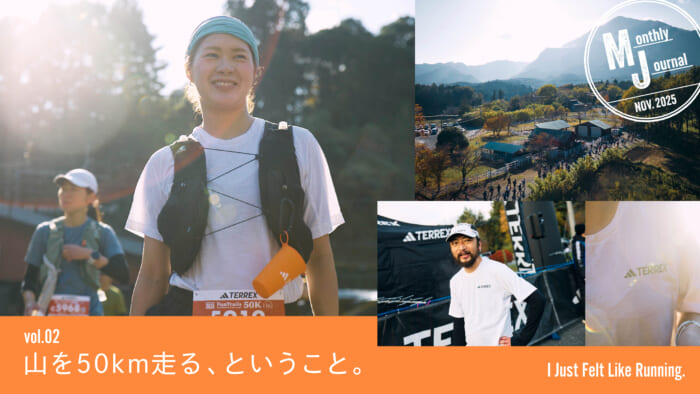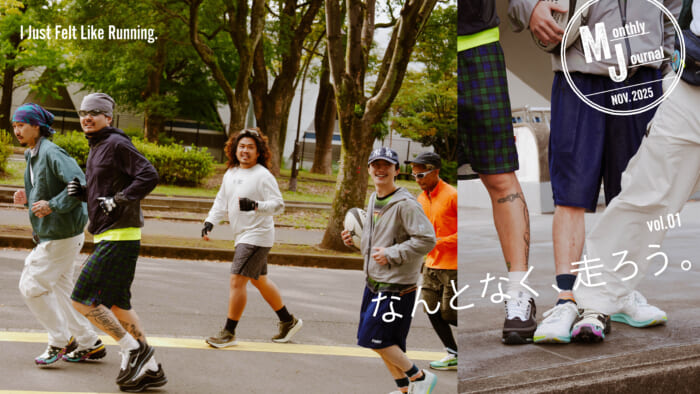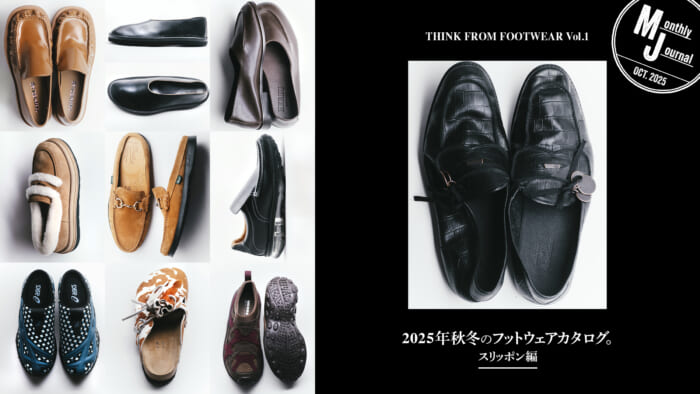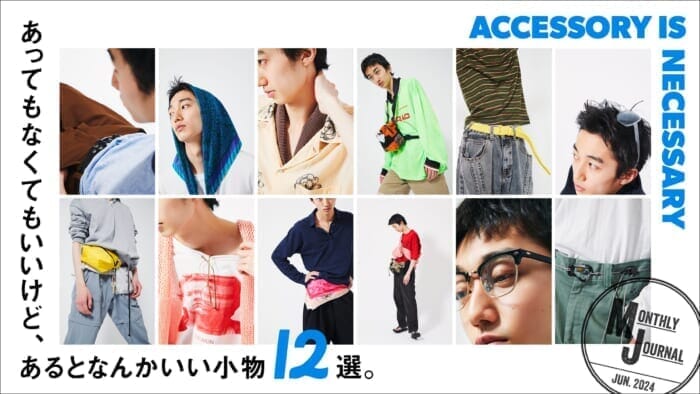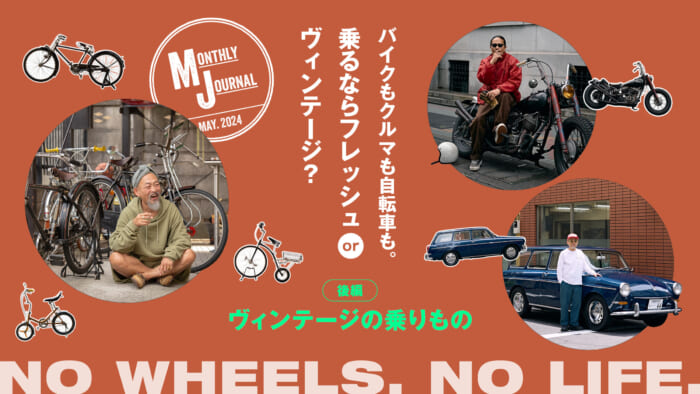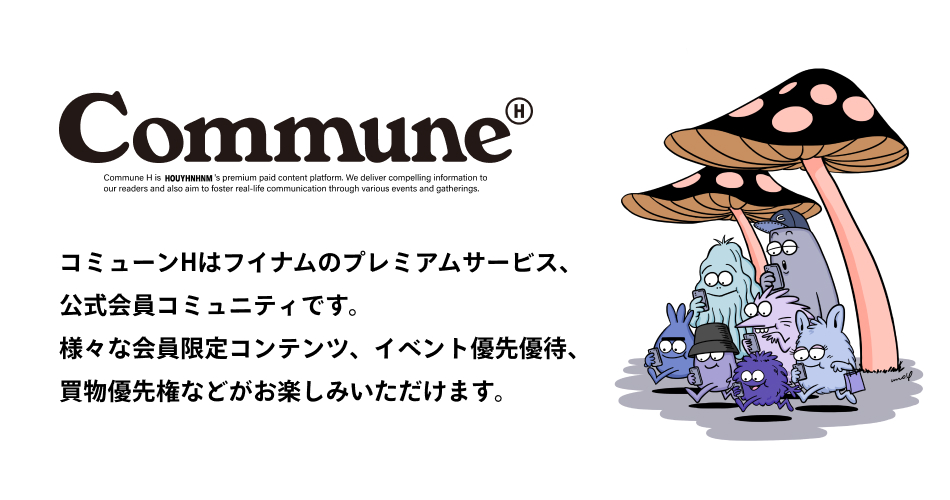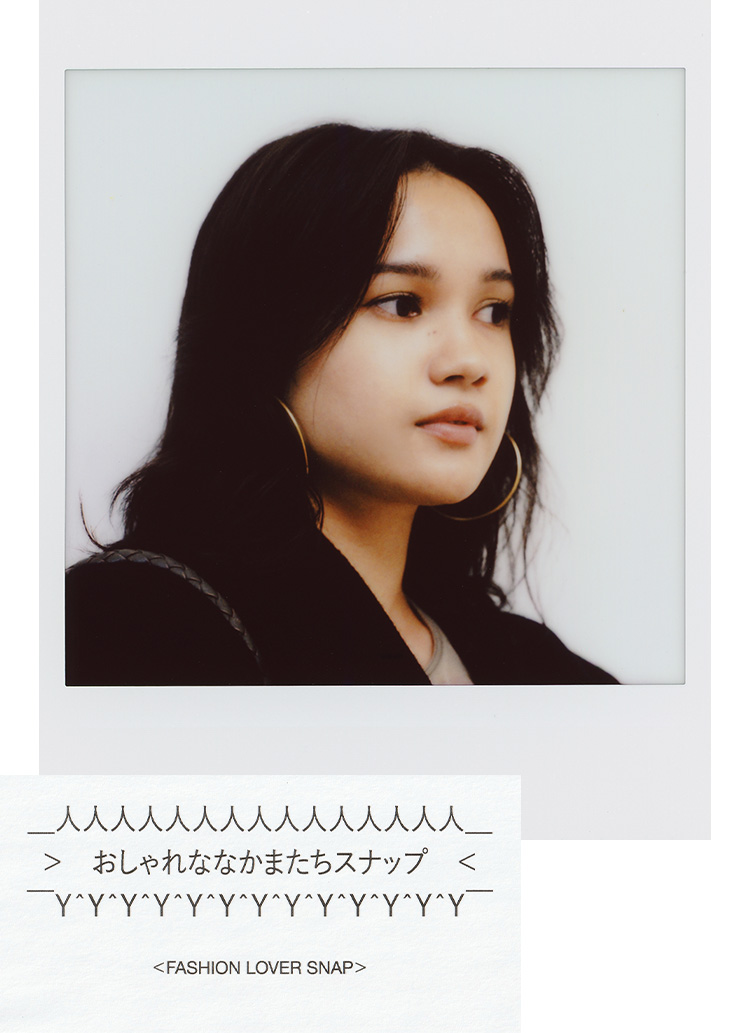PROFILE

. Born in 1995. Raised in Kobe, Japan, he moved to England in 2010. After graduating from the London School of International Art, he entered the BA Womenswear Department at Central Saint Martins in 2001. He launched his own eponymous brand, "Taiga Takahashi," in New York after graduating from the school in 2005, and landed in Japan for the fall/winter 2021 season.
. like archaeology, capturing what was, and creating what will remain in the future, 100 years from now.
Have you been interested in creating something since you were a child? Can you tell us about when you first became interested in fashion?
I was always not good at communicating with people or being social, and I worried as a child about how I could be social. . On the other hand, I liked to express myself through drawing and making things. I had a yearning for the world of art, which places great value on expression, and I think my personality was intensely attracted to things that I found beautiful.
As an adolescent, I became aware of how I was seen through my clothes. Perhaps because of this awareness on the part of the creator, I became curious about how clothes are made in the first place. Then, when I was in junior high school, I learned of the existence of designers through books and magazines, and learned that all of the people I was interested in had graduated from the same school.
That was the prestigious "Central Saint Martins" in London, where you later went on to higher education. . When did you go to London?
I had the idea that if I went there, I could study their way of thinking. . When I was in junior high school, I happened to see a summer course for teenagers organized by this school and immediately went to London. . I found that creative work could connect me with people from different countries, transcending cultural and language barriers. . This is what made me decide to spend the rest of my life abroad.
After graduating from junior high school, I enrolled in a high school in London where I studied fine arts and fashion. I remember how shocked I was to learn that people in countries where art is deeply rooted in the culture appreciated my differences not as a negative thing, but as something attractive and unique.

Mr. Takahashi appeared in a casual T-shirt and jeans.
. What did you gain during your four years at Central Saint Martins?
The pursuit of making things gave me a bird's eye view of myself and an opportunity to ask myself what I am through the filter of clothing. What changed my perspective the most was the fact that fashion is viewed in the category of art. It is not just seen as clothing to be worn, but also in the context of art, including how the clothing was created and the linkage between social conditions and the way it is dressed. I realized that the most important aspect is not only the technical aspects such as sewing techniques, but also how to create the initial concept.
You have studied at prestigious maisons since you were in school, but after graduation, you moved to New York to set up your own business. What was it like for you to leave Europe?
Sculptor Constantin Brancusi once said, "Nothing grows in the shade of a great tree." . Once he found himself in Rodin's workshop, he soon decided to go his own way. After all, you can never surpass a person by imitating him. At the root of my current clothes-making is an attitude of rejecting everything I have learned up to now.
After asking myself what I really want to do, I realized that if the role of a designer is to constantly propose new things, I have the "spirit of a collector who finds true beauty in relics of the past. . At the root of my current clothes-making process is a denial of everything I have learned up to this point. Beyond my vision, there is not only clothing but also contemporary art, so there was a necessity for me to locate myself in New York, a city of contemporary art that is full of artists and galleries.

Have you loved "collecting" antiques and antiquities since you were a child? How did this collector's spirit lead to your creations?
. I was unusually fond of them. I felt an incredible fascination and energy for things that looked like trash to others. since I was a teenager, I have been collecting clothes from 70 to 100 years ago through antique dealers and antique dealers overseas in various countries, and through these "collections" (collecting), I have been studying clothes from an "archaeological "I have been researching clothing from the perspective of "archaeology.
It seemed irresponsible to design without any knowledge of the history of clothing, such as why we wear this kind of clothing or what clothing looked like 100 years ago. What I am doing through "Taiga Takahashi" is similar to the sensation of dissecting clothing from the past, and I believe that clothing survives and withstands time like a time capsule, allowing us to relive memories of the past and also to lock in cultures and traditions that are being lost.
Taiga Takahashi: What is your approach to making clothes?
. our theme is "to unearth the archaeological objects of the future by reviving the relics of the past. From the viewpoint that the true value of manufacturing may already exist in history, I research the background and nature of manufacturing in the past while eliminating arbitrariness, just like an archaeologist. Each piece of clothing reflects how I understand the history and dressmaking in all the elements of each piece of clothing, from the fabric and pattern to the sewing.

This denim jacket is one of Taiga Takahashi's signature pieces.
. Could you tell us about the key points of this fall/winter collection in particular?
It is simple, but the fact that I have a 100-year-old garment with me is proof that the garment survived for 100 years. . And if I understand how these clothes are made, the clothes I make will also survive 100 years. I want to make clothes that will survive time. With this in mind, I am interested in the manufacturing of products from the time before mass production and mass consumption, which began 100 years ago in the 1920s in the United States, a kind of "turning point" in the history of the world.
Against the backdrop of the American capitalist society, a system in which production was possible without the traditional hand skills of craftsmen, the specifications and designs of the clothes produced there pursued efficiency, and the elements of what is called "design" did not even exist to the extent of being considered at all. Straightforward sewing, simplification through flat patterns, the durability of fabrics and the shape of pockets to withstand heavy labor... The concept of design probably did not exist in the language of the time. I came to realize that there are many aspects of kimono design that are in line with the design of the kimono. . something that can be passed down from generation to generation. I wondered if I could fuse the spirituality of the ancient Japanese kimono with the rational mindset of American mass production. That was the start of this collection.
From a different perspective, it was the Japanese who found value in American vintage clothing, so in a roundabout way, I believe that this is a culture and innovation born of the Japanese characteristic of improving existing things. From a Shinto perspective, in accordance with the ancient Japanese sense and idea that "God dwells in all things," I am conscious of the sense that God dwells in every detail, even in the stitching and sewing of a single item.





The look photos for the fall/winter 2021 collection were composed of black-and-white visuals reminiscent of Robert Frank .
. I often hear that there are many lost technologies, including the question of whether or not a single piece of dough is still in the machine itself and whether or not it can be operated.
There is quite a bit. We are working through trial and error with the people in the producing areas. The standards and high technology of those days are now being lost for reasons such as inefficiency. I have noticed that the older the technology, the more difficult it is to reproduce. Also, the lifestyle, skeletal structure, and concept of comfort are different, so patterns are inevitably different. In this sense, I feel as if I am getting in touch with the thoughts, culture, traditions, and historical background of the people of that time as I dig through the "ruins" like an archaeologist.
I see that the only tags are "T.T." and your initials. Does this have something to do with the permanence that you are aiming for?
Yes, about 100 years ago, there was no concept of fashion brands, and tailors made clothes custom-made for individuals. It was common practice to put the owner's initials on the garment, so I only put my own initials on the garment. Old clothes are fine as objects, but they are often difficult to wear on a daily basis. . There is a premise of making clothes that I want to wear and that I can wear, while preserving the essential aspects of the object. . We create products that combine both concept and product perspectives.
Different times mean different societies and different values related to clothing . . It makes no sense to "reproduce" because it is necessary to change these "different now" aspects. The fabrics are historically and technically very profound, and my own elements are present in everything from the buttons to the threads for stitching and needlework. It is more like a "time capsule" that I created, and when someone in the future opens it, only my intentions will remain in the garment.

The "Taiga Takahashi" tag has initials on it, not the brand name. It has an anonymous atmosphere.
We heard that you are currently constructing the "Archaeological Institute of Taiga Takahashi" in a 100-year-old machiya (townhouse) in Gion, Kyoto. Could you tell us why you chose Kyoto?
I have spent almost half of my life abroad, but as I have spent more and more time in Japan in the last year, I have come to want to study the unique Japanese culture as well. . I have also become more and more aware of what it means to be Japanese objectively. I wanted to know how clothes came to Japan, and I also wanted to learn about Japanese architecture, and my attention was drawn to Kyoto, the only place where living "fossils" are gathered, and the city itself has permanence. For Taiga Takahashi, seeing and touching the real thing is the best way to bring his clothes to life. Therefore, we needed a place where people could actually hold the clothes in their hands.
Kyoto is the first city that I remember for myself when I go back to my memory. My family and I used to go to Gion every year. In that sense, I thought it would be interesting to show what I am doing now in a city that can be said to be my starting point.
. In this project, you are working with a stonemason, Mr. Masatoshi Izumi, who has carved most of Isamu Noguchi's stone sculptures. We can sense the expansion of Mr. Takahashi's expression.
. Not only clothing, but also architectural design and the creation of sculptures in Mure, Kagawa Prefecture, which I am working on as a contemporary artist named Taiga Takahashi. In addition to clothing and architecture itself, on the second floor of the "Archaeological Institute of Taiga Takahashi," I would like to study the cultural origins of Japanese technology. All of these are my artistic expressions, and I consider the store itself to be my comprehensive art, visualizing a certain aesthetic that emerges from reviving lost culture and technology. . I hope that in the future, this place will be like an "archaeological site. . "By reviving the relics of the past, we unearth the archeological artifacts of the future" will be the theme in my artistic expression as well. . And by setting up a studio in New York, the center of contemporary art, I would like to understand what contemporary art is about on my own skin, and I would like to belong to a gallery that suits me, show my work regularly, and compete with artists from around the world.


